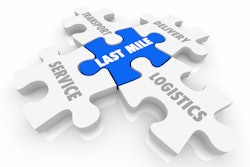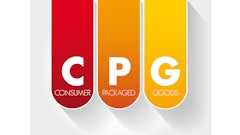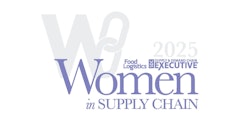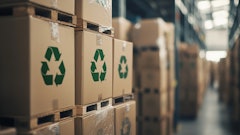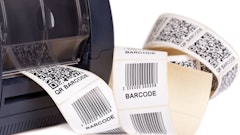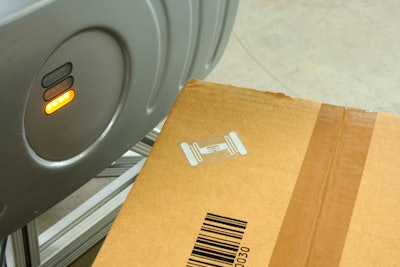
With new regulations on the rise, companies are rethinking how they package their products to be more sustainable. Recent EU packaging regulations prioritize waste reduction through packaging minimization and recyclability, highlighting the global push for smarter, more cost-effective packaging.
State legislatures have passed similar legislation. Maine's packaging stewardship program, set to fully launch in 2027, will mandate brand owners pay fees based on their packaging's volume and recyclability. This shifts waste management costs from municipalities to businesses and incentivizes sustainable packaging design. Businesses will need to adapt before Extended Producer Responsibility (EPR) regulations roll out nationwide. Businesses that can quickly adapt will be the ones to succeed in the future market.
Artificial intelligence (AI) is at the center of this shift, transforming how packaging is designed, produced, and delivered. AI is helping businesses cut down on packaging waste, reduce costs, and ship products more efficiently. As it achieves these goals, it also lowers associated freight, warehousing, and labor costs.
AI-powered sustainable packaging: Less waste, smarter processes
In the interest of efficiency, traditional packaging techniques have frequently relied on a limited range of standard box sizes. This can lead to situations where products ship in boxes much too large for their dimensions. The resulting void requires excessive filler material, demanding significant manual labor to pack and secure the product. Packing by hand can slow down automated systems, whether it's fixing misaligned products, adding protective liners, or securing fragile items. Additionally, prefabricated standard boxes need ample storage space, reducing warehouse utilization, and handling prefab boxes requires extra labor, further contributing to operational costs.
While many companies address EPR regulations by switching to eco-friendly materials, the most significant impact comes from reducing overall packaging volume. Tech-forward systems built using AI can do this using machine learning to analyze shipping requirements like product dimensions, weight, and fragility. The system then determines the exact packaging size required for shipping and automatically cuts and assembles a box to fit. With real-time data, companies can ship products in the smallest possible box without sacrificing protection.
By creating right-sized packaging, companies can eliminate the need for extra padding and bulky inserts, reducing material usage. This material waste reduction helps companies comply with increasingly stringent EPR legislation while also reducing costs and environmental impact. Since packaging is created only as items ship, warehouse utilization is also improved. With fewer steps in the process, companies save time and cut labor costs. Moreover, cutting down on packaging size is often more effective for meeting EPR goals than just switching materials.
AI-optimized logistics: Fewer emissions, lower costs
Imagine a truck packed to its full capacity, yet half of its cargo space is wasted by air and filler. That’s the reality of traditional shipping. These inefficiencies waste fuel and needlessly increase costs and emissions. AI-driven packaging changes this. By reducing wasted space on pallets, delivery space can be allocated more efficiently, allowing businesses to ship more items per truckload. This minimizes “empty-mile” trips, reducing transport emissions and improving overall fuel efficiency.
Deploying a right-sized packaging solution directly translates into improved logistics, allowing for maximum truck load factor and a corresponding reduction in transportation costs and environmental impact. It also reduces the need for additional delivery vehicles, representing significant operational savings.
Business benefits: AI-driven sustainability pays off
Even with new regulations, McKinsey data reveals fewer than 30% of businesses have clearly defined metrics surrounding packaging sustainability or recyclability. The lack of clear benchmarks hinders progress. To drive meaningful change, companies must first understand the metrics defining success. Increasingly, this is where AI can play a pivotal role.
As highlighted in the same McKinsey report, even small packaging changes can have substantial impact. One manufacturer reduced Scope 3 emissions–the indirect emissions occurring in the company’s value chain–by nearly 50% simply by replacing a custom return-required container with a collapsible, locally serviced alternative. This highlights the power of rethinking seemingly minor packaging elements. AI can go further, providing deep insights into packaging design and identifying opportunities to reduce shipping inefficiencies.
Beyond regulatory compliance, AI-powered packaging delivers a strong return on investment (ROI). By reducing materials costs, optimizing warehouse space, and minimizing freight expenses, businesses achieve significant overall savings. Added to labor efficiencies, AI-powered packaging becomes a financially strategic move.
Conclusion
AI-powered packaging isn’t just about meeting regulations. It’s also a smart way to save money and reduce waste. By optimizing packaging size and streamlining logistics, companies can cut costs while lessening their environmental impact. Those who adopt AI-driven packaging now will be well-prepared for evolving EPR requirements even as they gain a strategic advantage through improved operations. With sustainability and profitability increasingly intertwined, AI will provide a crucial competitive edge for businesses seeking to lead their market.






